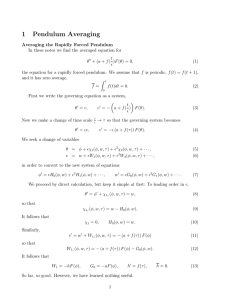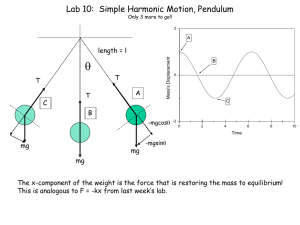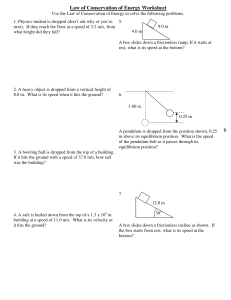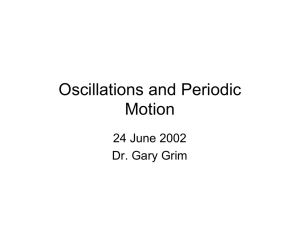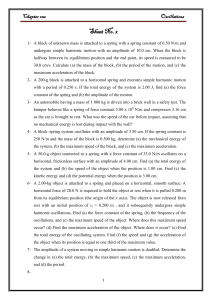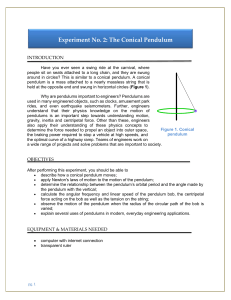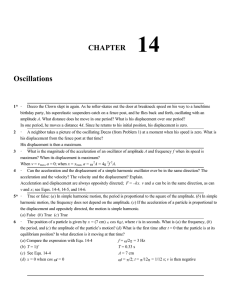HW-3 1. A body of uniform cross-sectional area A and mass density
advertisement
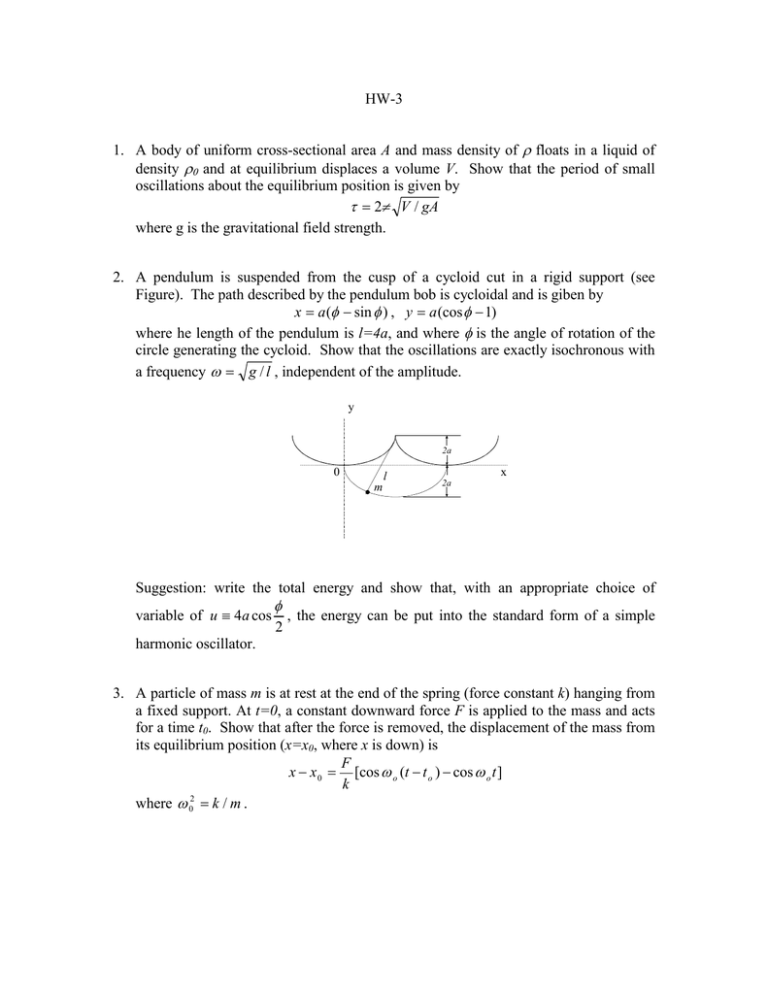
HW-3 1. A body of uniform cross-sectional area A and mass density of ρ floats in a liquid of density ρ0 and at equilibrium displaces a volume V. Show that the period of small oscillations about the equilibrium position is given by τ = 2π V / gA where g is the gravitational field strength. 2. A pendulum is suspended from the cusp of a cycloid cut in a rigid support (see Figure). The path described by the pendulum bob is cycloidal and is giben by x = a (φ − sin φ ) , y = a (cos φ − 1) where he length of the pendulum is l=4a, and where φ is the angle of rotation of the circle generating the cycloid. Show that the oscillations are exactly isochronous with a frequency ω = g / l , independent of the amplitude. y 2a 0 l m x 2a Suggestion: write the total energy and show that, with an appropriate choice of φ variable of u ≡ 4a cos , the energy can be put into the standard form of a simple 2 harmonic oscillator. 3. A particle of mass m is at rest at the end of the spring (force constant k) hanging from a fixed support. At t=0, a constant downward force F is applied to the mass and acts for a time t0. Show that after the force is removed, the displacement of the mass from its equilibrium position (x=x0, where x is down) is F x − x 0 = [cos ω o (t − t o ) − cos ω o t ] k 2 where ω 0 = k / m . 4. The support of a simple pendulum of natural frequency ωo is moved horizontally with the simple harmonic motion Asinωt where ω ≠ ωo. With small amplitudes, calculate the steady-state motion of the pendulum bob. Show that the pendulum appears to pivot about a point for which the natural frequency would equal ω. 5. Consider the mechanical system shown below with a dash-pot (the dash-pot produces a friction force proportional to the moving speed), a spring and a mass attached end to end. The mass is subjected to a force F=Fosinωt (in addition to the spring k). Calculate the amplitude of the motion of the mass m. k m F

